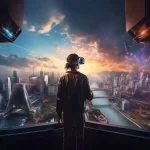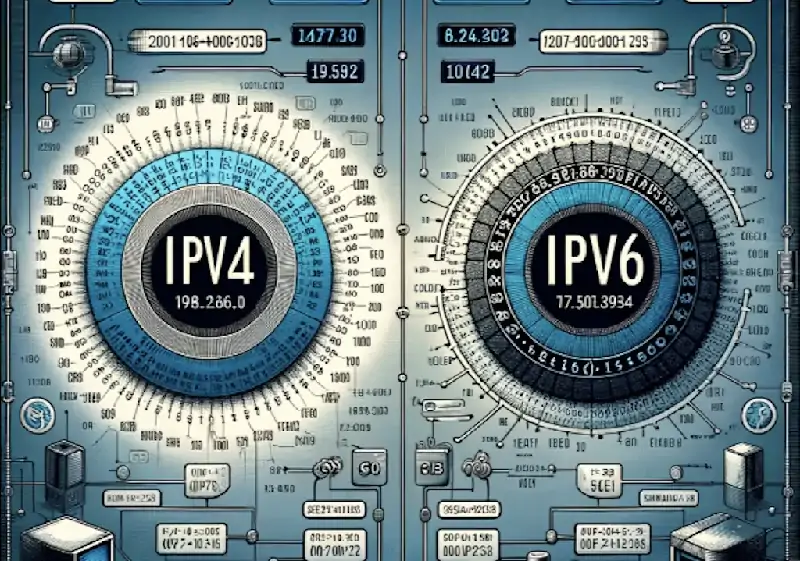- Spatial computing integrates technologies such as VR, AR, and MR to blend digital information with the real world, creating a new computing environment that perceives and understands the space around us.
- Spatial computing finds applications in various fields such as geographic information systems, intelligent transportation systems, urban planning, smart homes, industrial internet, virtual reality, and game development.
- The technological support for spatial computing involves the synergy of sensors, cameras, data processing, and AI algorithms. The industry is exploring and developing modelling engines, augmented reality, high-precision recognition and positioning, and other technologies to support spatial computing.
In recent years, the continuous development of 3D spatial human-computer interaction technology has made the concept of spatial computing familiar to practitioners. From virtual engines to VR, AR, and other hardware, people have a strong interest and desire to explore the integration of virtual and real spaces. This blog post provides a brief introduction to the concept of spatial computing and analyses its application areas and technological support.
Introduction to spatial computing
Spatial computing is a computing paradigm that integrates technologies such as virtual reality (VR), augmented reality (AR), mixed reality (MR), etc., with the aim of blending digital information with the real world. This fusion creates a new computing environment that can perceive and understand the space around us and weave digital content into real-world scenes. Spatial computing has a wide range of applications, including geographic information systems (GIS), intelligent transportation systems, urban planning, and more.
Initially, spatial computing referred to the technology of computing and analysing maps and other geospatial data for positioning and measurement purposes. With the development of XR, virtual humans, digital twins, and other technological fields, the demand for micro-level spatial computing is gradually increasing. Other more natural input methods, such as voice, vision, and gestures, will further enrich traditional interaction models like mice, keyboards, and touch screens, allowing people to access and interact in the most suitable way for their current scenarios and business processes.

Also read: Meta opens its mixed-reality Horizon OS to other headset makers
Spatial computing finds applications in multiple fields
The traditional internet is essentially 2D computing, where various applications present users with 2D content such as text, images, videos, and live streaming. The limitation of 2D restricts the possibilities of interaction, whether it is between people, people and content, people and businesses, or people and the digital world, all interactions are confined to a 2D plane.
Spatial computing, on the other hand, adds depth to computing. The spatial computing layer includes technologies such as 3D engines, VR/AR/MR, speech and gesture recognition, spatial mapping, digital twins, etc. Compared to the concept of the metaverse, spatial computing is already a tangible development stage. Its most important application at present is in the industrial sector.
With the maturity of spatial computing technology, it will have significant applications in various fields such as smart homes, industrial internet, geographic information system development, map services, urban planning, intelligent transportation, virtual reality, game development, and more, making people’s work and life more intelligent.
For example, spatial computing can match various forms of entertainment such as games, concerts, art galleries, scenic spots, KTV, etc. It can enable gesture and voice control to provide an immersive cultural and tourism experience, enhance tourist cognition, and create multidimensional sensory experiences. It can support various virtual social scenarios, providing multiple forms, multiple scenarios, and shareable social situations for human social life. It can serve digital twin cities, transportation management, water supply and drainage improvement, weather forecasting, and other urban management tasks, improving the level of intelligent management. It can also facilitate the marketing of the metaverse, virtual IP, and other new business formats in more commercial scenes such as retail, real estate, finance, etc. In various industrial scenarios, spatial models can help achieve the digitisation of personnel, machines, objects, and their environments, continuously optimising the processes between them.
Also read: What does the mesh do in augmented reality?
Technological support of spatial computing
To effectively enable interactive operations in space, it relies on the synergy of numerous sensors, cameras, data processing, and cutting-edge AI algorithms. It is a complex process that requires deep collaboration between hardware, software, and algorithms.
The industry chain of spatial computing can be broadly divided into terminal devices, software tools, applications, and services. In terms of applications and services, spatial computing has already been implemented in various scenarios such as commerce, cultural tourism, industry, exhibitions, finance, gaming, film and media, and collaborative workspaces. Examples include immersive shopping, digital virtual humans, AR storytelling shows, and AR cultural tourism.
In order to support spatial computing, the industry is currently exploring and developing modelling engines, augmented reality, high-precision recognition and positioning, large-scale terrain rendering, and so on. Companies such as Apple, Google, and Huawei have each established their own spatial computing platforms to enable implementation in areas such as high-precision mapping, gaming, entertainment, and industry. However, due to the maturity of consumer-grade relocalisation technology and high-performance simultaneous localisation and mapping (SLAM), the development level of integrating the real and virtual world is still in its early stages and has some distance to go before reaching excellent user experience standards.
In the future, the development of the spatial computing era will rely on the close integration of hardware, networks, computing power, and algorithms. Although spatial computing will face challenges posed by new products and technologies, more companies and research institutions will join in to create more value and convenience.








